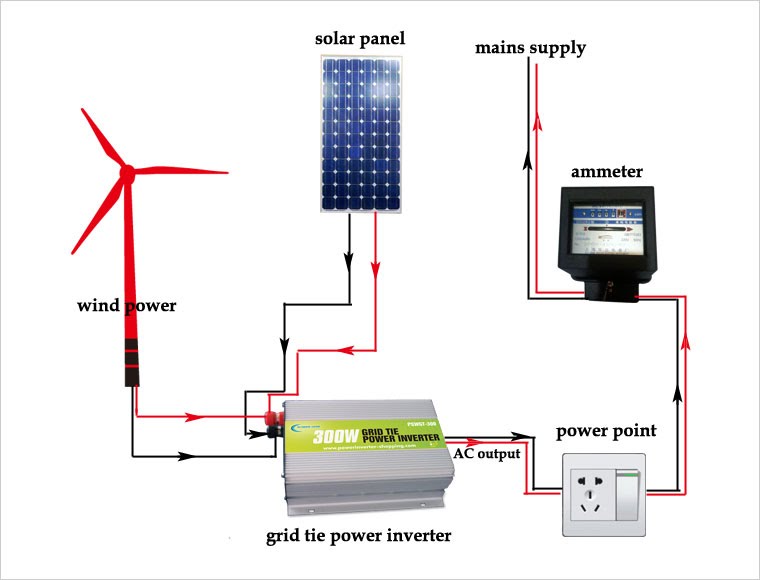Content Attributes
A grid-tie inverter can be defined as a type of solar inverter which is capable of feeding the converted energy into the main power grid by matching their frequency and phase. These solar inverters are capable enough of shutting down on their own for safety reasons when they are connected to the national utility grid.
While shopping for a grid-tie inverter, check the solar inverter price and then make a purchase according to your needs and budget.

Benefits of a Grid-Tie Solar Inverter
- Ever thought about earning money by generating your own electricity? Well, it is not unthinkable anymore. A grid-tie inverter enables you to generate your own electricity
- With the help of solar panels, you can run different electrical appliances, and at the same time, it also allows you to sell the extra electricity to the power distribution company.
- It comes with dual and quad MPPT charge controllers, thereby allowing you to install multiple solar panel strings in parallel position for maximum space utilization. These MPPT charge controllers are extremely efficient, delivering 99.9% efficiency. Hence, maximizing solar energy generation through solar panels.
- It comes with Remote Monitoring System allowing you to access your solar system performance anywhere in the world through the mobile app.
- A grid-tie inverter is an IP65 product, which makes it completely dust and waterproof, therefore, allowing you to easily install it outdoors
- Compliance with the IEC standards and having BIS certification makes this inverter completely safe, reliable, and approved for government subsidies.
Applications of a Grid-Tie Solar inverter
A grid-tie inverter is an ideal solar solution for your home, office, and other workplaces. It is a suitable choice for urban areas because of the easy access to power connections and lines to connect to the utility grid.
People who do not wish to invest in solar batteries should opt for grid-tie inverters.
Selection Procedure
Once you have a rough idea about the solar inverter price, it becomes easy to choose a grid-tie inverter. In India, the capacity of the grid-tie solar inverters usually starts from 1kW which goes beyond 100kW and comes in 2 different variations- single-phase and three-phase. Compare the different solar inverter prices, and based on your requirements, you should opt for the most suitable grid-tie solar system.
Installation and Use
Select the right location for the installation of an inverter
For the inverter installation, ensure that the grid-tie inverter is installed in a well-ventilated space where the ambient temperature is in the range of -25 degrees Celsius to 60 degrees Celsius.
The inverter should be mounted in a vertical position having a minimum of 500 mm of clear distance from the ground, ceiling, and sidewalls.
In case more than 1 inverter needs to be installed, a minimum of 500 mm of clear distance should be kept between the 2 inverters.
Mounting the Inverter
To mount the inverter on a wall, first, secure the mounting brackets on the wall using 4 screws. Make sure that the bracket is mounted horizontally and is levelled.
Carefully hang the inverter on the wall mount bracket and ensure it is hooked into the bracket properly.
Solar Panel Connection to Inverter
A grid-tie inverter is designed for electrical connection without removing the cover, and hence, various other ports for electrical connections are provided at the bottom of the inverter.
Assuming that you have already made a solar PV string of panels, follow these steps below for electrical connections of the inverter-
- Before you connect the inverter, make sure that the PV string of open circuit voltage is within the inverter limit, that is, a maximum of 600 volts for a single-phase inverter and 1100 volts for a three-phase inverter.
- To begin the installation, first, turn off the DCMCB and the DC distribution box and connect the string wires coming from all the solar panels to the DC distribution box.
- Take the output from DCMCB to the positive and negative terminals of the DC1 on the inverter.
Connecting Inverter to the Grid
Ensure that the mains are connected first, for which switch off the grid’s main AC supply. Now switch off the ACMCB in the AC distribution box and connect the grid output wire from the inverter to the AC distribution box.
Connecting with Dongle
Once all the electrical connections are made, connect the GSM or WiFi dongle to the inverter by inserting it properly in the communication com port of the inverter. The installation process will be completed.
Before you purchase a grid-tie inverter, compare the price and features and choose the one that will be cost-effective as well as serve your purpose.
Popular brands like Luminous bring you a wide portfolio of solar inverters that are specially designed for your home. Explore their website and seek help from solar experts who will guide you in choosing the best grid-tie solar inverter.
So, what is stopping you? Get your grid-tie solar inverter today!